The Future of Preparedness:How AI-Powered Multi-Sigma® Predicts the Threat of Tsunamis

On July 30, 2025, televisions across the globe are filled with urgent news. A massive magnitude 8.8 earthquake has struck off the coast of Russia’s Kamchatka Peninsula. A resulting tsunami is now racing across the Pacific, threatening coastal communities in Japan, Hawaii, and along the West Coast of the Americas.
Hours of special news coverage create a quiet tension worldwide. Fortunately, direct physical damage is limited, but the economic impact including disrupted transportation and closed businesses is significant. More importantly, the event brings back vivid memories of past disasters like the 2011 Tōhoku tsunami, serving as a stark reminder of the critical importance of being prepared.
Looking globally, tsunamis triggered by massive earthquakes—such as the 2004 Sumatra earthquake, the 1960 Chile earthquake, and the 1964 Alaska earthquake—have repeatedly caused devastating damage. Looking to the future, Japan is bracing for major predicted events like the Nankai Trough megaquake and a catastrophic earthquake striking the Tokyo metropolitan area. This threat extends far beyond Japan. For example, the U.S. Geological Survey forecasts a 72% probability of a magnitude 6.7 or greater earthquake hitting California’s San Francisco Bay Area within the next 30 years, and similar risks loom over other Pacific Rim nations like Taiwan and New Zealand, highlighting the ongoing potential for earthquake-induced tsunamis.
To enhance our preparedness, we need to predict the behavior of tsunamis in advance using computer simulations. While everyone agrees on the necessity of doing this, executing these simulations faces a formidable set of obstacles.
The Three Walls Hindering High-Fidelity Simulation
Accurate tsunami simulation is the heart of any effective evacuation plan. However, its implementation is blocked by three deeply rooted challenges.
- Wall #1: The Resource Wall (Time and Cost)
First, simulations demand an overwhelming amount of time and computational power. It’s not uncommon for a single simulation under one set of conditions to take half a day, even on a high-performance computer. To test the countless possible scenarios, running just 1,000 simulations would require a staggering 500 days.
- Wall #2: The Skills Wall (Advanced Expertise)
Next is the severe shortage of personnel capable of running these simulations. The process requires highly specialized knowledge, from setting up environments in operating systems like Linux to installing countless libraries via command line and operating dedicated simulation software.
- Wall #3: The Dependency Wall (Knowledge Silos and Organizational Risk)
Finally, this concentration of advanced skills in a few individuals creates a serious risk. The transfer or departure of one of these valuable experts can instantly cripple an organization’s analytical capabilities. Know-how becomes tied to individuals rather than being stored and passed down as an organizational asset. This is a business continuity risk that nearly every organization faces.
This trifecta of obstacles is not unique to disaster prevention. It is a fundamental challenge in every field where simulation creates value, from product development in manufacturing to forecasting in financial markets.
How AI Tears Down These Walls
The key to breaking this stalemate lies in the strategic application of AI. But simply introducing AI isn’t enough to solve this complex and interconnected problem. The solution is a two-step approach.
- Step 1: Surrogate Models Demolish the Resource Wall
This AI model acts as a “surrogate” for the real simulation. By learning from a small number of actual simulation results, the AI model grasps the underlying physical laws and can instantly predict outcomes under new, untested conditions.

An AI model (surrogate model) is created by learning from the outputs of a simulator.
What once took 500 days can be completed in mere minutes using surrogate models. These models are game-changers that shatters the absolute constraints of resources (time and cost) in simulation.
- Step 2: Multi-Sigma® Breaks Down the Skills and Dependency Walls
However, this alone is not enough. Building a surrogate model typically requires another set of advanced skills in AI and programming. This leaves the “Skills” and “Dependency” walls standing, albeit in a different form.
This is the final, and most significant, barrier that Multi-Sigma® removes.
Requiring no programming whatsoever, Multi-Sigma® allows users to analyze data and build powerful surrogate models with intuitive, mouse-based operations. This empowers the subject matter experts and frontline team members to build these powerful tools themselves.
In other words, the limited simulation results generated by a few specialists can be transformed into a surrogate model that everyone in the organization can use. This transforms expert knowledge into a shared organizational asset, finally putting an end to the persistent problem of knowledge silos.
Using surrogate models with Multi-Sigma® is a practical and powerful tool that can be used to break down all three walls holding your organization back.
Seeing is Believing: How Multi-Sigma® Solves Complex Real-World Problems
Let’s see how Multi-Sigma® tackles a complex tsunami forecast for the Makran Trench off the coast of Pakistan, a region known for its significant tsunami risk.
In this case we use only a few dozen tsunami simulation results as training data. As input conditions, we varied the longitude and latitude of the earthquake’s epicenter and the initial height of the tsunami. Figure 2 shows what the results from a single simulation look like at a specific observation point.
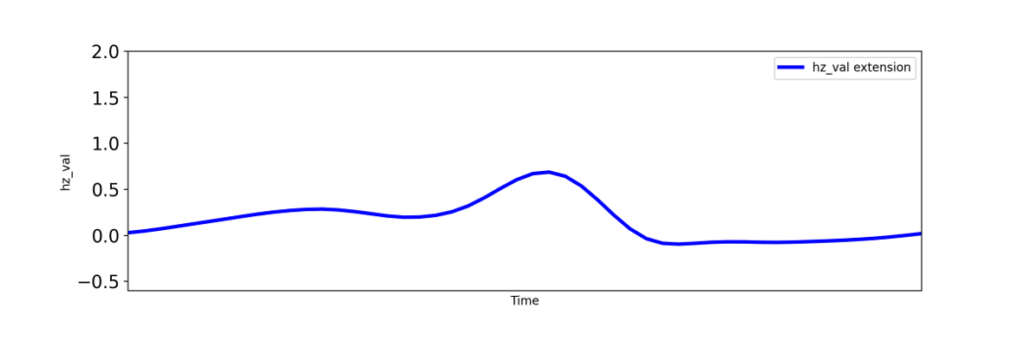
The horizontal axis represents time, and the vertical axis represents sea level height.
- CASE 1: Low Variance in Epicenter Location (100km x 100km)
First, we had Multi-Sigma® build a surrogate model where the epicenter varied within a relatively small 100km x 100km area. We provided the AI with training data sampled from the full simulation results (Figure 4).
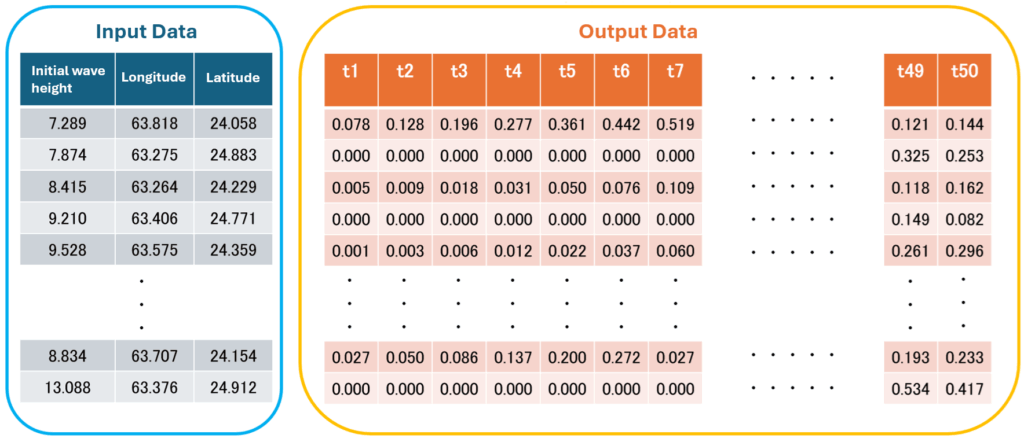
Using this AI model to predict wave behavior for a new, “unseen” epicenter within this range, the results were a near-perfect match. As shown in Figure 4, the prediction from Multi-Sigma® (red line) almost completely overlaps with the result from the traditional, time-consuming simulation (blue line).
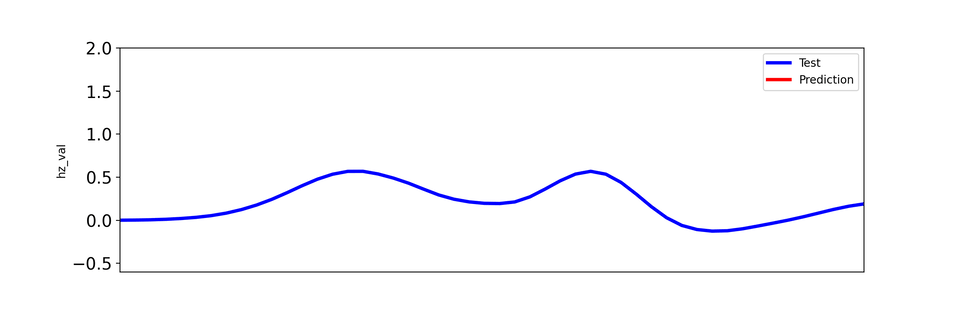
Demonstrating extremely high prediction accuracy under limited conditions.
- CASE 2: The Real-World Challenge :– Expanding the Epicenter Variance (300km x 200km)
Next, we expanded the epicenter’s possible location to a much larger and more realistic 300km x 200km area. As shown in Figure 5, with the increased complexity, the prediction accuracy dropped, creating a noticeable gap between the simulation result (blue line) and the AI’s prediction (red line).
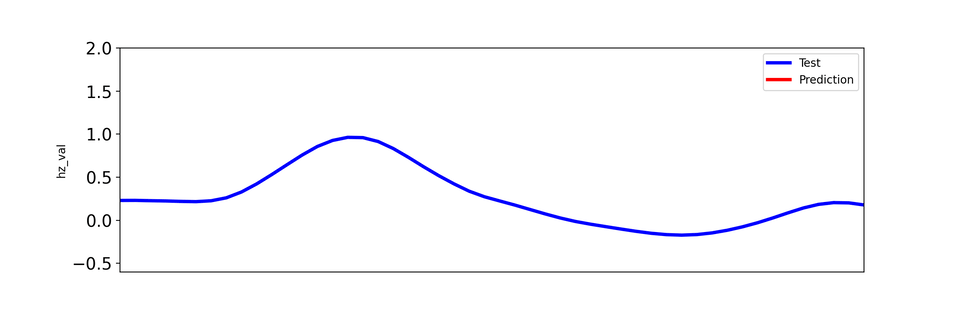
Accurate prediction becomes difficult under complex conditions.
- CASE 3: The Breakthrough – Achieving High Accuracy with Data Preprocessing
This is where the power of the platform truly shines. We applied a data preprocessing technique called Functional Principal Component Analysis (FPCA) to the data before feeding it back into Multi-Sigma®. This “translation” process helps the AI more easily grasp the essential underlying patterns in the complex data. The result? The prediction gap vanished. As seen in Figure 6, Multi-Sigma® regained its high accuracy, even under these widespread and complex conditions.
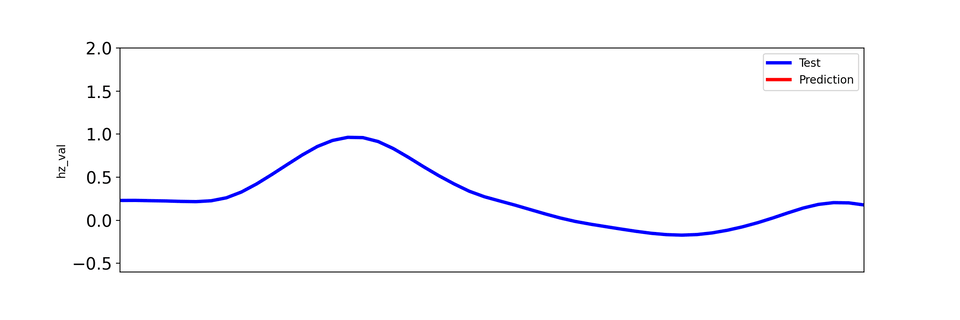
Appropriate preprocessing improves accuracy even under complex conditions.
Bring Advanced Predictive Analytics to Your Business
Multi-Sigma® is redefining the landscape of simulation. The power demonstrated in this tsunami analysis is applicable across all industries.
- Manufacturing:
Drastically cut development time and costs for automotive crash tests or thermal analysis of electronics by instantly testing thousands of design parameters with a surrogate model.
- Chemicals & Materials Science:
Accelerate new material discovery. An AI surrogate model can rapidly screen countless molecular combinations to identify candidates with the desired properties.
- Finance & Economics:
Turn complex economic models into agile surrogate models. Assess the real-time impact of interest rate changes or policy shifts on the market to build more robust risk management strategies.
Multi-Sigma® is more than just a tool. It is a solution that tears down the wall between a handful of specialists and your frontline teams, empowering everyone to leverage advanced simulation. It transforms expert knowledge into an organizational asset. Are you ready to build a future of preparedness and win in an unpredictable era? Let’s build it together.
We welcome opportunities for collaborative research and joint applications for national research projects. Please do not hesitate to contact us for more information.
(Reference)
Gaussian Process Regression for Ionosphere-Based Tsunami Warning and Functional History Matching
https://discovery.ucl.ac.uk/id/eprint/10204193
機械学習を使った分析や予測が日常的に行われる今、協調フレームとしてのMulti-Sigma®の役割は増すばかりです。
『どのような場面で活用できるのか』をもっと知りたい方や、実際の利用シーンを見てみたい方は、是非一度お気軽にご相談ください。
In a world where machine learning-based analysis and prediction are becoming everyday practices, the role of Multi-Sigma® as a collaborative framework is more crucial than ever.
If you're interested in learning more about how it can be applied or want to see real-world examples, feel free to contact us.





